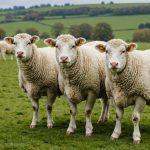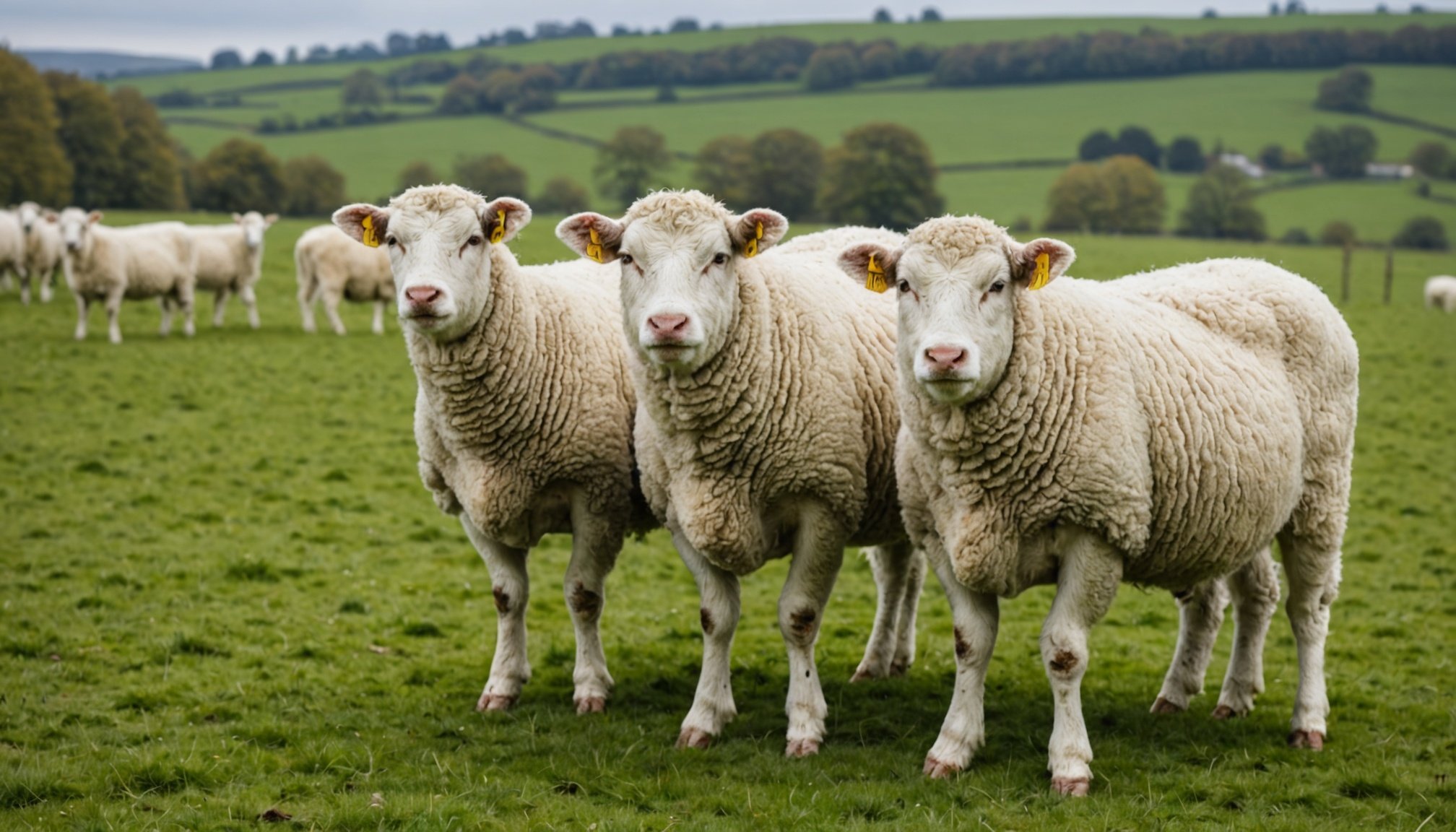Overview of Sustainable Wool Farming Innovations
Sustainable wool farming takes a pivotal role in balancing industry growth with environmental stewardship. It aims to preserve ecological integrity while maintaining the economic viability of wool production. This commitment involves practices that reduce the environmental impact of farming while ensuring animal welfare and quality output.
In the UK, innovations in this sector are setting new benchmarks. Farmers are increasingly adopting eco-friendly practices such as rotational grazing, biological pest control, and organic feeding. These methods not only enhance the health of the pastures but also contribute to the overall well-being of the sheep, yielding wool that meets high sustainability standards.
In parallel : Uncover edinburgh”s hidden gems for tailor-made cashmere scarves
A shift toward carbon footprint reduction is evident with the introduction of renewable energy sources and efficient waste management systems on farms. Furthermore, precision farming technologies are enabling more personalized care of the livestock, optimizing resource use and minimizing wastage.
Implementing eco-friendly practices within wool farming requires a thorough understanding of local ecosystems. Techniques such as integrated land management and soil fertility enhancement are gaining momentum, gradually replacing traditional methods. By embracing these innovations, the wool industry can look forward to a future that is both sustainable and profitable.
Topic to read : Uncover manchester’s best-kept secrets: your premier guide to opulent vintage boutiques
Interviews with Industry Leaders
The insights from industry leaders in sustainable wool farming are invaluable, shedding light on both current practices and future prospects. Prominent figures, such as seasoned farm managers and sustainability advocates, offer their expert insights into implementing eco-friendly solutions. Through their voices, we gain a better understanding of the hurdles and triumphs within the industry.
In conversations with these leaders, key perspectives on challenges reveal a familiar theme: the integration of innovative practices with traditional methods. Many leaders emphasize the need for a balanced approach, ensuring that technological innovations complement established farming techniques. This synergy is crucial for maintaining both productivity and ecological balance.
The discussions also touch on the future of sustainable practices, where leaders express optimism yet caution. They highlight the importance of continued research, fostering a culture of adaptability and continuous learning. This forward-thinking mindset is essential for coping with unforeseen changes in market demands or environmental conditions.
Through these interviews, the sense of community among industry players becomes apparent. Collaboration, they stress, is vital not only at the local level but also across global networks. Sharing knowledge and resources ensures that wool farming remains both sustainable and responsive to the environmental and economic landscapes.
Technological Innovations in Wool Farming
In the evolving landscape of wool farming, technological innovations play a pivotal role in enhancing sustainability. The integration of advanced farming technology is reshaping traditional methods, proving indispensable in achieving eco-friendly and efficient practices.
Modern tools such as precision agriculture devices provide profound insights by monitoring soil and livestock conditions in real-time. These devices allow farmers to optimise water usage, improve pasture management, and reduce wastage, thereby aligning with sustainable practices effectively.
Moreover, drone technology has emerged as a robust tool in wool farming. Drones assist in surveying expansive pastures quickly, offering crucial data for managing sheep herds efficiently. This technology minimizes the need for frequent manual inspections, thus conserving time and resources.
A major leap is seen with automated shearing systems, which enhance not only efficiency but also the sheep’s well-being by reducing stress and injury during the process. Comparison between traditional and innovative methods reveals profound differences in productivity and ecological footprint.
In essence, embracing these technological solutions leads to a healthier ecosystem and boosts the economic viability of wool farming, affirming its commitment to both the environment and industry growth. The adoption of such advancements ensures that wool farming remains competitive and sustainable for future generations.
Case Studies of Successful Sustainable Wool Farms
Exploring diverse case studies provides a vivid landscape of innovative farming practices within the wool industry. In the UK, several farms have become exemplars of sustainable practices, showcasing the potential of eco-friendly operations.
Take, for instance, the vision implemented by Farm A, where integrated pest management systems are used, reducing chemical dependence and promoting biodiversity. By leveraging such practices, the farm enhanced both pasture health and sheep welfare, resulting in a 25% improvement in wool quality.
Meanwhile, Farm B has pioneered renewable energy adoption, utilizing solar panels to power farm operations, thereby shrinking its carbon footprint by 40% compared to traditional methods. This strategic energy shift not only protects the environment but also drives substantial cost savings in the long term.
The outcome of these practices is profound. Farm C, embracing advanced waste management techniques, substantially cut down operational waste, which in turn nourished the soil and heightened pasture productivity. Such sustainable efforts have not only elevated environmental favour but also consumer perception, increasing demand for eco-friendly wool products.
These farms exemplify how sustainable practices incrementally transform business models, reinforcing the positive synergy between agriculture and the environment. Through embracing these methodologies, wool farming can thrive, combining profitability with ecological responsibility.
Policy Implications for Sustainable Wool Farming
The landscape of policy implications for sustainable wool farming in the UK is both dynamic and essential for guiding industry practices. These regulations are designed to ensure that wool farming not only sustains its economic viability but also aligns with environmental goals. UK farming policies are increasingly focused on promoting eco-friendly agricultural methods, offering a framework for practices that safeguard biodiversity and reduce carbon footprints.
Governmental support plays a critical role in driving these initiatives. Funding mechanisms, such as subsidies and grants, are available to assist farmers in adopting sustainable technologies and methods. This financial backing is crucial in offsetting initial costs associated with transitioning to more sustainable farming operations.
However, the regulatory environment also presents challenges. Compliance with new standards requires significant adaptation in farm management practices, which can be resource-intensive. Despite these hurdles, successful adherence to policies not only aids in environmental conservation but also enhances the marketability of wool products by meeting the rising consumer demand for eco-friendly products.
In conclusion, the impact of governmental regulations is profound, shaping a future where the wool industry can thrive sustainably. Continuous dialogue between policymakers and farmers is vital for refining these policies to better address the evolving needs and barriers in the sector.
Statistics on Sustainability Impacts
Navigating the landscape of sustainable wool farming reveals compelling sustainability statistics. These figures highlight the tangible benefits of eco-friendly wool farming practices, showcasing the industry’s positive effect on the environment.
One significant statistic shows a reduction of up to 30% in carbon emissions among farms implementing sustainable practices. This achievement results from a shift towards renewable energy sources and more efficient resource management. Such reductions not only preserve local ecosystems but also contribute to broader environmental goals.
Moreover, environmental benefits extend to biodiversity enhancement. Farms practising eco-friendly approaches often report a marked increase in local wildlife populations. This improvement is attributed to habitat restoration and reduced chemical usage, creating a more balanced ecosystem.
Trends in consumer attitudes further emphasize the importance of sustainability. There is a growing demand for wool products verified as sustainable, with surveys indicating that 65% of consumers prefer eco-friendly options. This shift is driving more farms to adopt greener methods, aligning their operations with consumer values.
As these trends continue, the impact of sustainable wool farming will undoubtedly expand, offering additional opportunities for environmental conservation and economic growth. With informed decisions and strategic implementation, the industry is well-positioned to meet the evolving expectations of conscious consumers.
Best Practices for Implementing Sustainable Wool Farming
Embarking on the journey of sustainable wool farming requires a strategic approach. Successful implementation hinges on understanding best practices and how they can be adapted to fit local ecosystems. This involves a meticulous evaluation of current methods and a readiness to embrace new, eco-friendly approaches.
A pivotal step is adopting integrated land management. This practice not only enhances soil fertility but also ensures optimal resource use. Sustainable farmers routinely employ rotational grazing to maintain pasture health and reduce soil erosion. Such techniques foster biodiversity, vital for robust ecological systems.
Transitioning to sustainable practices necessitates mindful consideration of energy use. Incorporating renewable energy sources like solar power reduces carbon footprints while offering long-term cost savings. Coupled with efficient waste management systems, these practices can significantly lower environmental impact, ensuring wool farming remains a responsible and viable industry.
Numerous resources are accessible to facilitate this transition. Farmers can tap into governmental grants and subsidies designed to offset the financial burdens of initial implementation. Additionally, engaging in farmer networks and training programs can bolster knowledge and skills, helping navigate the intricacies of sustainable farming. Such practices ensure not only environmental stewardship but also bolster the economic longevity of wool farming.
Potential Challenges in Sustainable Wool Farming
Navigating the world of sustainable wool farming comes with its set of challenges. One prominent barrier is the economic hurdle. Initial investments in eco-friendly technologies, like renewable energy systems and advanced waste management, can be substantial. This financial constraint often dissuades smaller farms from transitioning to sustainable practices. However, overcoming these barriers is crucial for the long-term viability of wool farming.
Another significant challenge is the environmental variability. Changes in climate and unpredictable weather patterns can disrupt even the most well-planned eco-friendly approaches. Farmers need to adapt quickly, often requiring additional resources and technologies to maintain sustainability in their operations.
To address these challenges, collaboration and knowledge sharing become vital. Sustainable wool farmers can greatly benefit from engaging in networks that provide peer support and information exchange on best practices. Furthermore, leveraging governmental grants and subsidies can mitigate some of the initial financial burdens.
Lastly, staying ahead of regulatory changes is essential. Compliance with evolving policies demands continuous education and adaptation of farm strategies. Despite these barriers, with strategic planning and resourcefulness, the wool industry can continue to evolve sustainably, balancing both environmental and economic concerns.









